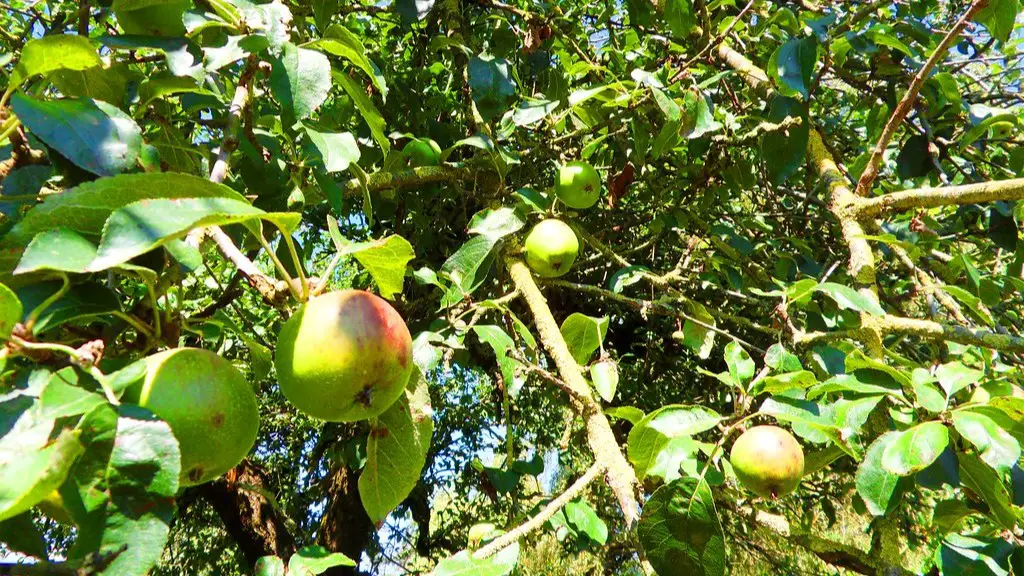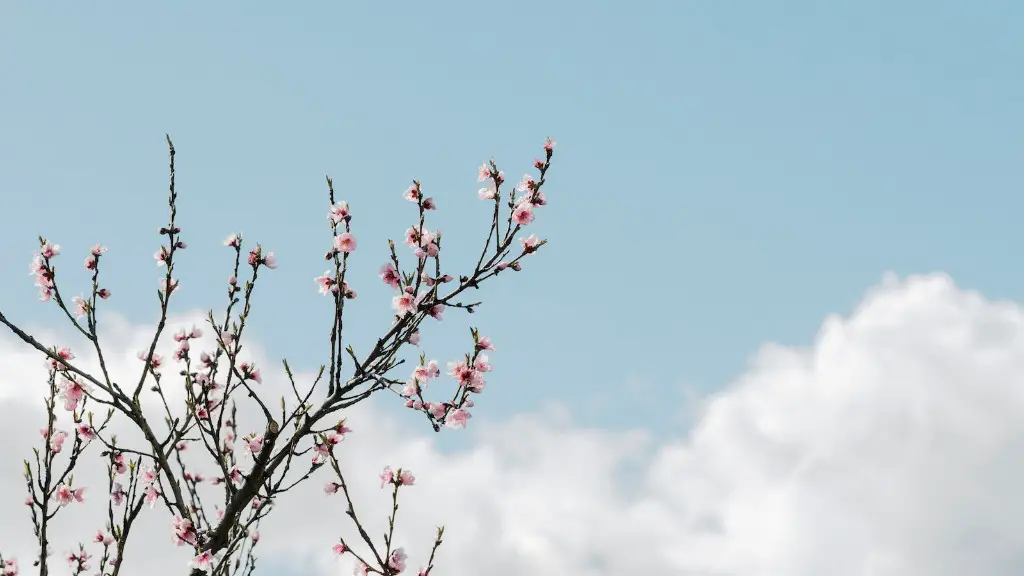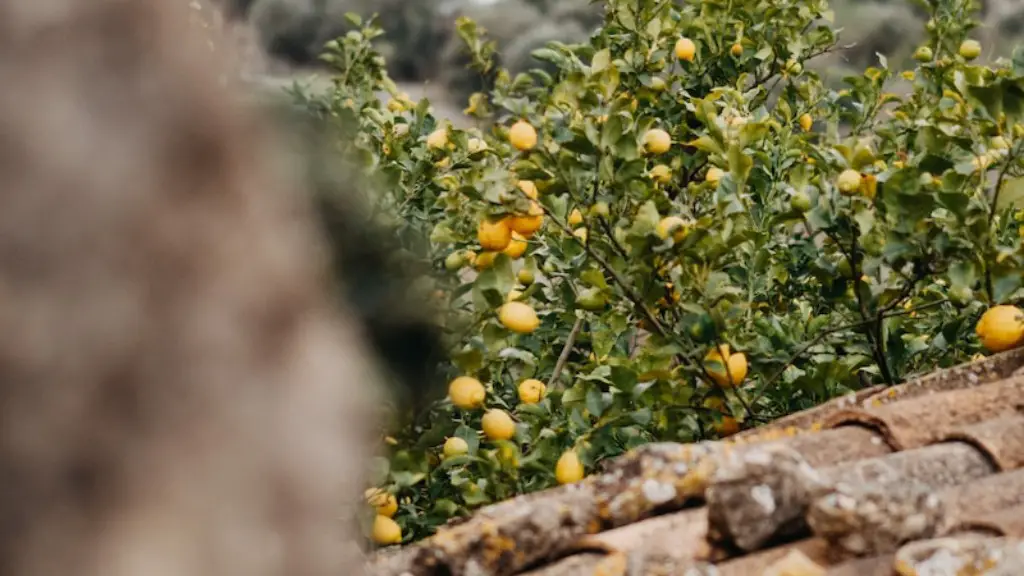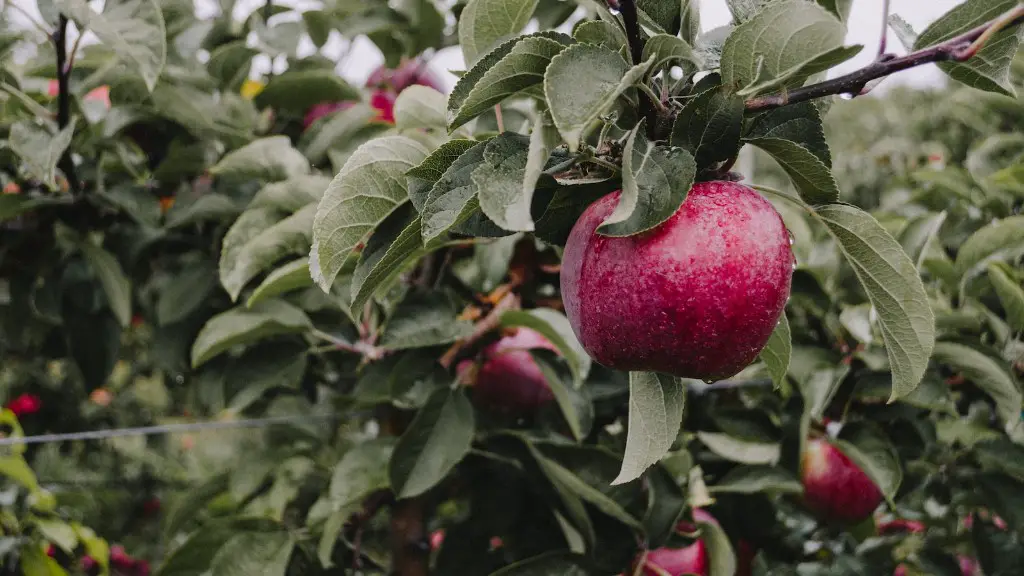Producing apples is a complicated process, and a lack of apple production from a tree can be caused by several factors. Most often, apple trees do not fruit due to improper planting, inadequate soil moisture, inadequate nutrition and pest and disease. There also could be environmental factors such as temperature, sunlight and wind that can affect the production of apples.
When planting an apple tree, tree variety, planting location, timing and spacing are all important factors. For best results, the tree should be planted at early ages in fertile, well-drained soil. The soil should have a pH of 6.5 to 7.5. Planting at the right time of year and in the right location are also essential for apple production.
Adequate soil moisture is also important for good apple production. When growing fruit trees, it is important to maintain soil moisture levels during hot and dry seasons by irrigation. During dry spells, the soil should be kept moist but not waterlogged. Too much or too little soil moisture can lead to poor tree growth and no apple production.
Nutrition is also important for good apple production. Apple trees need adequate amounts of nitrogen and phosphorus for good fruit production. Trees should be fertilized in late winter and/or early spring for best growth and production results. It is important to follow the fertilizer label carefully to ensure you are providing the proper amount of nutrients for the tree.
Pest and diseases can also be a problem. Apple trees can be susceptible to several pests and diseases. Common pests include aphids, mites, caterpillars, and apple maggots. Disease issues include apple scab, fire blight, and powdery mildew. It is important to monitor the tree regularly and take action to control any problems that may arise.
Finally, environmental conditions such as temperature, sunlight, and wind can affect apple production. Different apple varieties require different temperature, sunlight and wind conditions for optimal fruit production. Apple trees prefer a consistent climate that is not too hot or too cold during its blooming and fruiting periods. The tree should also receive adequate sunlight during the day andno strong winds that could damage or destroy flowers and young fruit.
Improper Planting
An apple tree that was not planted correctly can lead to a lack of apple production. When planting an apple tree, it is important to choose a variety that is suited to the area and the climate. Trees should be planted in fertile, well-drained soil at the right time of year, allowing adequate spacing between trees. Planting at an early age is also important as it gives the tree more time to grow.
For best results, the tree should be planted at a depth that is three to four times the diameter of the root ball. The soil should also be prepared well by adding compost, fertilizer, and other nutrients for best growth. Varieties should be matched to the climate to ensure maximum apple production.
The site where the tree is planted should also be taken into consideration. Apple trees should be planted in full sun and sheltered from strong winds. Pruning should also be done to ensure good airflow, proper growth and production. By following these planting tips, the tree should be set up for optimal growth and fruit production.
Inadequate Soil Moisture
Maintaining adequate soil moisture is essential for good apple production. When growing fruit trees, it is important to keep soil moisture levels consistent during the hot and dry season. Too much or too little soil moisture can lead to poor health and growth, resulting in no apple production.
Adequate soil moisture can be maintained by supplementing rainfall with irrigation in the summer. Trees should be watered deeply and infrequently, allowing the water to trickle down to the roots. For best results, the soil should be kept moist, but not waterlogged. Mulching and compost can also be used to help retain moisture.
It is important to monitor the soil moisture levels regularly to ensure the tree is not too wet or too dry. If the soil is dry to a depth of 8 inches, it is likely time to water. If the soil is always wet, then there may be a drainage issue that needs to be addressed.
Inadequate Nutrition
An apple tree requires adequate nutrition for good health and fruit production. Nitrogen and phosphorus are especially important and should be provided in the form of fertilizer. For best results, fertilizer should be applied during late winter and/or early spring. It is important to follow the fertilizer label carefully to ensure you are providing the proper amount of nutrients for the tree.
In addition to fertilizer, apple trees can also benefit from compost and other organic matter. Compost can help provide nutrients, improve soil structure, and retain moisture. Compost, manure and other organic matter should be added to the soil around the tree once or twice a year for optimal nutrient uptake.
It is important to test the soil to determine the nutrient levels of your soil. Once the soil test results are known, the appropriate nutrients can be added to ensure good apple production. By providing adequate nutrition, a healthy apple tree should be able to produce good crops of delicious apples.
Pest and Disease Problems
Pests and diseases can also be a problem for apple trees. Common pests include aphids, mites, caterpillars, and apple maggots. Disease issues include apple scab, fire blight, and powdery mildew. It is important to monitor the tree regularly and take action to control any problems that may arise.
Inspect the tree regularly for signs of pests and disease. If a problem arises, it is important to take action right away. Pruning and removing any infected branches can help control many pests and diseases. Organic insect control methods such as the use of beneficial insects and fencing can also help protect the tree.
It is also important to promote good tree health. A healthy tree is better able to resist pests and diseases. To encourage tree health, trees should be pruned and fertilized as needed. It is also important to keep weeds and grass around the tree well maintained. If you take these steps, you should be able to keep pests and diseases at bay and enjoy a good crop of apples.
Environmental Conditions
Finally, environmental conditions such as temperature, sunlight, and wind can affect apple production. Different apple varieties require different temperature, sunlight and wind conditions for optimal fruit production.
Apple trees prefer a consistent climate that is not too hot or too cold during its blooming and fruiting periods. When choosing a variety, it is important to select one that is suited to the area’s climate. The tree should also receive adequate sunlight during the day and no strong winds that could damage or destroy flowers and young fruit.
In addition, trees should be sheltered from strong winds as much as possible. Trees should be planted in sheltered locations where wind will not be an issue. Windbreaks such as shrubs and fencing can also be used to minimize wind damage.
In windy climates, pruning techniques can also be used to reduce wind damage. Trees can be shaped in a way that allows winds to pass through the canopy without damaging the tree. By monitoring temperature, sunlight and wind levels, you should be able to set up ideal conditions for optimal apple production.





